This article concerns the period 799 BC – 790 BC.

Lutetia, also known as Lutecia and Lutetia Parisiorum, was a Gallo–Roman town and the predecessor of modern-day Paris. Traces of an earlier Neolithic settlement have been found nearby, and a larger settlement was established around the middle of the third century BC by the Parisii, a Gallic tribe. The site was an important crossing point of the Seine, the intersection of land and water trade routes.
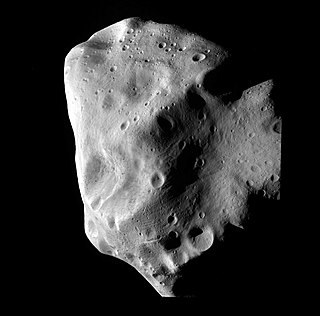
21 Lutetia is a large M-type asteroid in the main asteroid belt. It measures about 100 kilometers in diameter. It was discovered in 1852 by Hermann Goldschmidt, and is named after Lutetia, the Latin name of Paris.
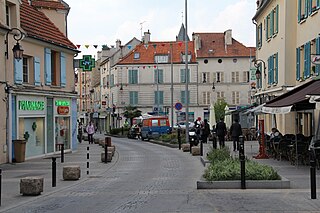
Nanterre is the prefecture of the Hauts-de-Seine department in the western suburbs of Paris, France. It is located some 11 km (6.8 mi) northwest of the centre of Paris. In 2018, the commune had a population of 96,807.

Asterix and the Golden Sickle is the second volume of the Asterix comic book series, by René Goscinny (stories) and Albert Uderzo (illustrations). It was first serialized in Pilote magazine issues 42–74 in 1960.

Asterix and the Banquet is the fifth volume of the Asterix comic book series, by René Goscinny (stories) and Albert Uderzo (illustrations). It was first serialized in Pilote magazine, issues 172–213, in 1963.

The Arènes de Lutèce are among the most important ancient Roman remains in Paris, together with the Thermes de Cluny. Constructed in the 1st century AD, this theatre could once seat 15,000 people and was used also as an amphitheatre to show gladiatorial combats.
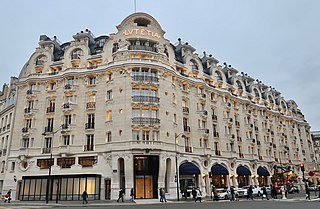
The Hôtel Lutetia, located at 45 Boulevard Raspail, in the Saint-Germain-des-Prés area of the 6th arrondissement of Paris, is one of the best-known hotels on the Left Bank. It is noted for its architecture and its historical role during the German occupation of France in World War II.
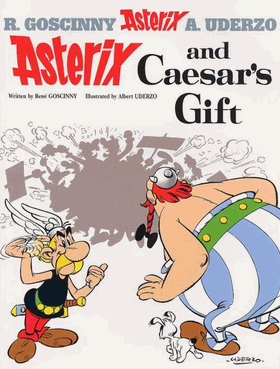
Asterix and Caesar's Gift is the twenty-first volume of the Asterix comic book series, by René Goscinny (stories) and Albert Uderzo (illustrations). It was the first Asterix adventure that was not published in serial form in Pilote magazine prior to its publication as a book.

Aubervilliers–Pantin–Quatre Chemins is a station of the Paris Métro. It is at the crossroads of the Roman road that led from Lutetia to east Flanders and the road between the communes of Aubervilliers and Pantin.

The Parisii were a Gallic tribe that dwelt on the banks of the river Seine during the Iron Age and the Roman era. They lived on lands now occupied by the modern city of Paris, whose name is derived from the ethnonym.
Rupes is the Latin word for 'cliff'. It is used in planetary geology to refer to escarpments on other worlds. As of January 2013, the IAU has named 62 such features in the Solar System, on Mercury (17), Venus (7), the Moon (8), Mars (23), the asteroids Vesta (2) and Lutetia (2), and Uranus's satellites Miranda (2) and Titania (1).
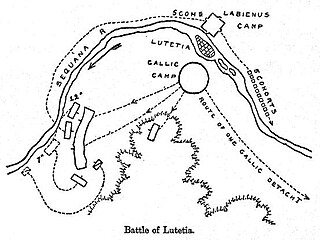
The Battle of Lutetia was a battle on the plain of Grenelle in what is now Paris between Roman forces under Titus Labienus and an anti-Roman Gallic coalition in 52 BC during the Gallic Wars. It was a Roman victory.
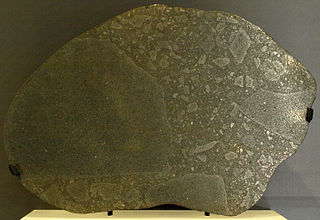
Enstatite chondrites are a rare form of meteorite, rich in the mineral enstatite. Only about 200 E-Type chondrites are currently known, comprising about 2% of the chondrites that fall on Earth. There are two main subtypes: EH and EL, classified based on their iron content.

Thespieus is a genus of skipper butterflies in the family Hesperiidae.
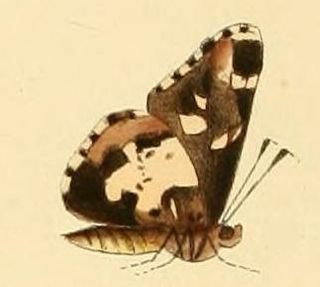
Thespieus himella is a butterfly in the family Hesperiidae. It is found in Rio de Janeiro, Brazil.















